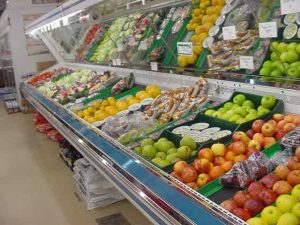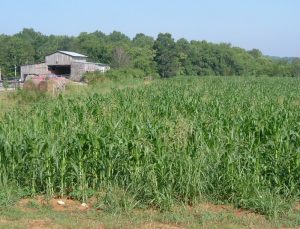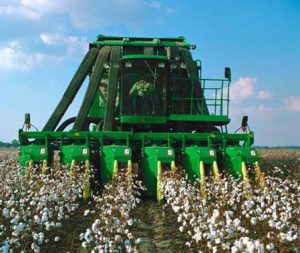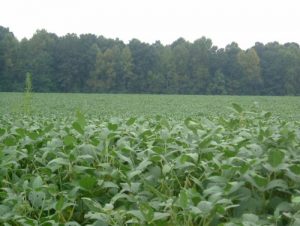In our section on Basic Geography, we went over some things about crops and livestock in Tennessee.
Now we’re going to answer some interesting questions about agriculture in Tennessee.
1. Where does the produce in the grocery store come from?
Depending on the time of year, some of the produce you see in the grocery store might come from Tennessee. In August and September, for instance, the zucchini, corn on the cob and tomatoes you see in the grocery store might have come from Tennessee.
But most of the time, the vegetables you see in a large grocery store such as Kroger come from far away. The potatoes might come from Idaho. The apples from Washington. The celery and lettuce from California or Mexico.
And you’ll never believe the story on the bananas! Most of the bananas bought in Tennessee grocery stores come from Central America. They were harvested months before you see them, packed in containers along with a gas that keeps them from aging, and sent to an American harbor by ship. Then they are transported by truck to Tennessee, and it is only then that they are removed from their sealed containers.
2. How much of Tennessee is farmland?
Forty percent of Tennessee’s total land area is used for farmland.
Of that farmland, crops grow on about two-thirds of that acreage, with livestock on the other third.
3. Why does cotton grow so well in West Tennessee but not in East Tennessee?
To grow well, cotton must be planted in fertile, deep, well-drained soil and have around 200 frost-free days. These factors make West Tennessee ideal for cotton and East Tennessee bad for cotton.
East Tennessee, you see, has shallower and rockier soil than West Tennessee. This shallow, rocky soil allows for adequate drainage, but the rocks don’t hold enough water for the cotton plants need to survive.
4. What happens to most of the corn grown in Tennessee?
The first thing to point out is that not all corn is the same. Farmers plant particular varieties of corn, some of which are good for one thing and some for another.
Having said that, the thing to remember about corn is that it is used for many things. If you could follow the course of a typical ear of corn, this is what you’d see: The dried kernels get removed from the ear (a process known as shelling) and milled up. Oil extracted during this process is usually made into corn oil (which you use to cook with). Part of the milled corn gets made into corn meal, while other parts of it are made into animal feed.
Having said that, some corn grown in Tennessee ends up as corn on the cob on your dinner table. Some corn is used to make corn syrup, which is used in soft drinks. Some corn is used to make a gasoline substitute called ethanol. And the “super absorbent” part of baby diapers is made from a variety of corn starch!
5. How much does farming equipment cost, and how does a farmer afford to buy it?
It costs a lot to be a farmer. Let’s say, for instance, that you are a cotton farmer. Right off the bat you are going to need a tractor, a planter (which the tractor pulls), and a harvester. If you head down to your local John Deere store, you’ll find that a good harvester will cost you at least $200,000. In case you don’t know, that’s more than the average price of a house in Tennessee.
So where does a farmer get this kind of money? Most of the time, he or she borrows it and, in the process, incurs quite a bit of debt. In fact, about two-thirds of the farmers in Tennessee have borrowed money to buy equipment of some kind.
6. Does food cost more or less than it used to?
In real dollars (or dollars adjusted for inflation), food costs less. Today, Americans only spend about nine percent of the money that they earn on food. Back in 1970 Americans spent 15 percent of the money they earn on food. If people had kept statistics on such things 100 years ago, they probably would have found that Americans spent more than a third of the money they earned on food.
What makes this shift all the more amazing is that people eat out much more than they used to. If we all stopped eating in restaurants, we’d spend even less than nine percent of our earnings on food.
Why the shift? Several reasons. Farming has gotten much more efficient; a farmer can produce much more per acre of land than he or she used to. Transportation costs have gone way down; it costs far less to transport that tomato, apple, and steak from the countryside to your house. Meanwhile, Americans have more disposable income than they used to.
Click here for the next section.





